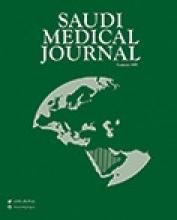Abstract
OBJECTIVES: To evaluate the antimicrobial effect by measuring the minimum inhibitory concentration MIC and minimum bactericidal concentration MBC of propolis, BioPure MTAD, 5% sodium hypochlorite (NaOCl), and 2% chlorhexidine CHX on Enterococcus faecalis (E. faecalis) and Candida albicans (C. albicans) in vitro.
METHODS: This study was performed in the Faculty of Dentistry and Pharmacy at Erciyes University, Kayseri, Turkey from February to April 2010. Ethanol extract of propolis (EEP) was prepared from propolis collected from Kayseri, Turkey, and proper media for microorganisms were prepared using sterile broth medium to give final concentrations between 0.002-2.4 mg/ml for propolis, 0.000125-0.512 mg/ml for CHX, and 1:2-1:4096 dilutions for NaOCl and BioPure MTAD. Using the macrobroth dilution method, MIC, and MBC values of irrigants on the growth of E. faecalis and C. albicans were determined.
RESULTS: Propolis and other irrigants were found to be effective on C. albicans and E. faecalis. Propolis and NaOCl were more effective in lower concentrations on C. albicans than on E. faecalis. In contrast, CHX and MTAD were more effective in lower concentrations on E. faecalis than on C. albicans.
CONCLUSIONS: Propolis showed antimicrobial activity against E. faecalis and C. albicans. It appears that propolis is an effective intracanal irrigant in eradicating E. faecalis and C. albicans.
- Copyright: © Saudi Medical Journal
This is an open-access article distributed under the terms of the Creative Commons Attribution-Noncommercial-Share Alike 3.0 Unported, which permits unrestricted use, distribution, and reproduction in any medium, provided the original work is properly cited.






